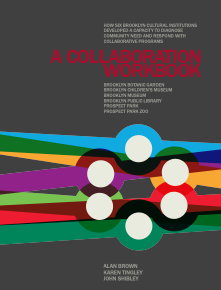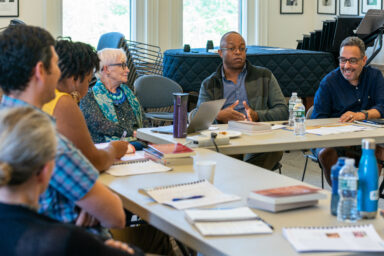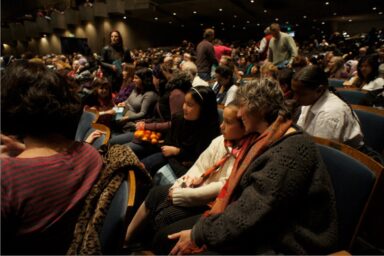
Commissioned by Heart of Brooklyn – A Cultural Partnership, with funding support from Institute of Museum and Library Services and The Rockefeller Foundation
Over the two-year period from 2011 to 2013, the six Heart of Brooklyn (HOB) cultural institutions designed, pilot tested, and evaluated a process for conceiving and implementing collaborative programs that address community needs. The overall purpose of the Building Strong Community Networks (BSCN) project was to build capacity for diagnosing and responding creatively to community needs through the diverse cultural assets of the six HOB members – Brooklyn Botanic Garden, Brooklyn Children’s Museum, Brooklyn Museum, Brooklyn Public Library, Prospect Park Alliance and Prospect Park Zoo.
A Collaboration Workbook distills what was learned, in hopes of advancing the field’s understanding of how cultural institutions that share the same community can find common ground and build an organic and robust approach to collaboration.
While numerous individuals contributed to the process, members of the BSCN Working Group, an inter-disciplinary, cross-institutional group of professionals drawn from the six HOB institutions, are primarily responsible for the outcome. Their extraordinary dedication of time and intellect made this publication possible.
The ideas of collaboration and “collective impact” currently enjoy a great deal of support, especially among funders, but there have been few opportunities in the cultural sector to experiment deliberately with building the capacity of cultural organizations to collaborate. The workbook candidly shares lessons learned over the two-year project, and describes the many tools and approaches that were developed, including:
- Approaches to organizing for collaboration, and the question of leadership;
- A public value audit to find areas of common ground regarding stakeholders and programmatic resources between multiple organizations;
- Approaches to community research that allow partners to learn directly from specific interest groups in the community;
- Approaches to idea generation – the process of synthesizing data and proposing creative solutions to problems, and then prioritizing those ideas;
- A process for moving potential collaborative ideas through a “product development funnel,” resulting in better ideas to which all of the collaborating organizations are more committed.
The report also discusses the pros and cons of having a central “backbone organization” to support collaboration (e.g., Heart of Brooklyn), versus distributing responsibility for collaboration across the partner organizations.
As more cultural institutions seek to magnify their impact by collaborating with others, new and more intentional approaches to collaboration are required. We hope the results of the BSCN initiative will be useful to others – especially those working in dissimilar but co-located institutions – who aspire to reach new levels of relevance and responsiveness to their community’s needs.




